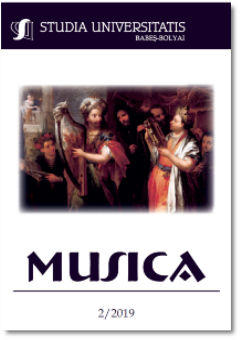FEMALE CHARACTERS IN SERAGLIO GENRE: CHANGING SOCIAL MILIEU AND PUBLIC SPACE FOR WOMEN DURING THE EIGHTEENTH CENTURY
FEMALE CHARACTERS IN SERAGLIO GENRE: CHANGING SOCIAL MILIEU AND PUBLIC SPACE FOR WOMEN DURING THE EIGHTEENTH CENTURY
Author(s): Oak Joo YapSubject(s): Fine Arts / Performing Arts, Music
Published by: Studia Universitatis Babes-Bolyai
Keywords: seraglio opera; women; sensibility; public space; Freemason; Enlightenment;
Summary/Abstract: With a harem-abduction narrative, the eighteenth-century seraglio opera ostensibly focuses on a male protagonist, or seemingly celebrates the Oriental male ruler as an enlightened monarch who conveys the Enlightenment messages. It is, nonetheless, the female characters that seraglio opera features prominently as they take initiative in a harem escape. Highly contrasting themselves with the prevalent contemporary sentimental heroine type, they unmistakably exhibit compelling stage presence and dominance over feeble or ineffectual male characters. Pasha Selim in Mozart’s Die Entführung aus dem Serail is, for instance, a mere speaking role stripped of eloquence expressed in singing. In Haydn’s L’incontro improvviso, female characters’ actions propel the seria side of the narrative, thus negating stereotypical notions of Oriental women: languorous, sensual or submissive beings. This paper argues that such a portrayal of women in seraglio genre reflects the changing social landscape during the Enlightenment: the burgeoning voice for and evolving views of women; the composers’ embracement of Enlightenment zeitgeist; and the societal recognition of women’s merit and power cultivated at public spaces such as salons or Freemasonic lodges during a century of sweeping socio-political currents.
Journal: Studia Universitatis Babes-Bolyai - Musica
- Issue Year: 64/2019
- Issue No: 2
- Page Range: 13-30
- Page Count: 18
- Language: English

